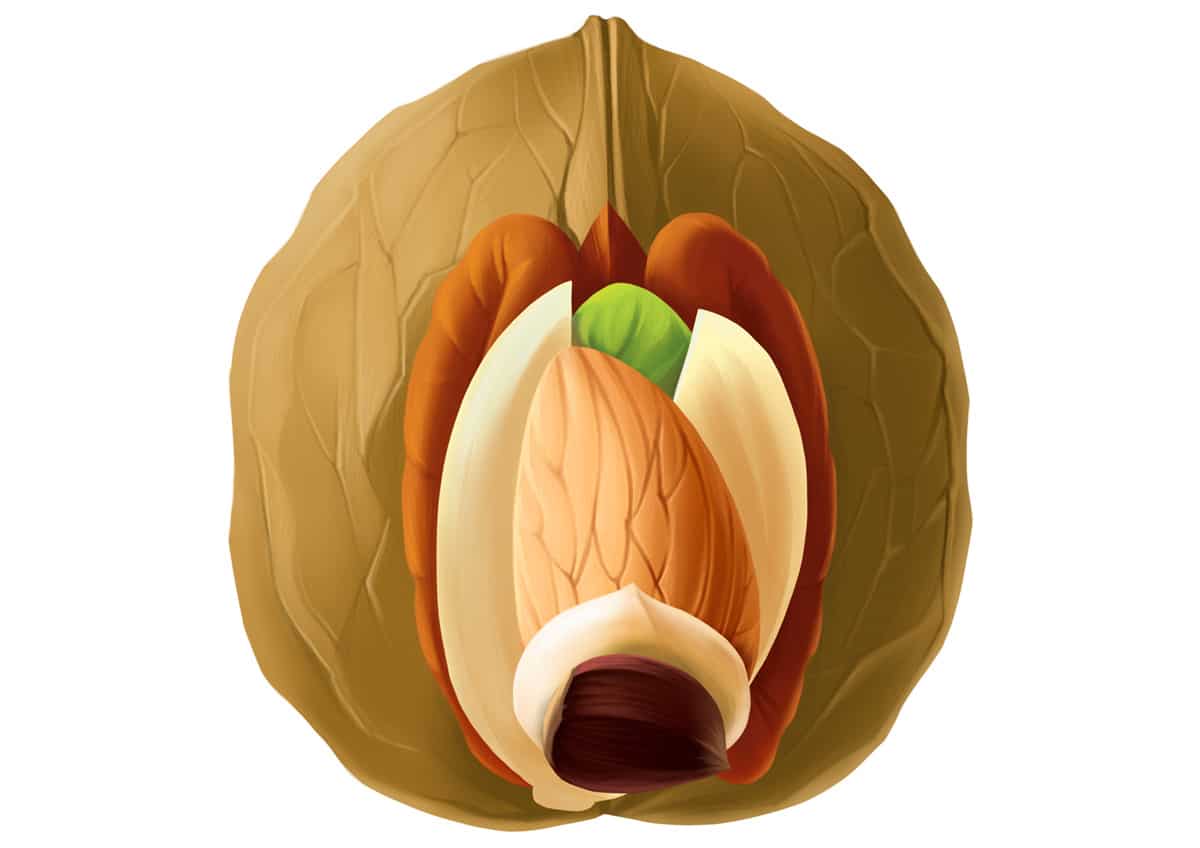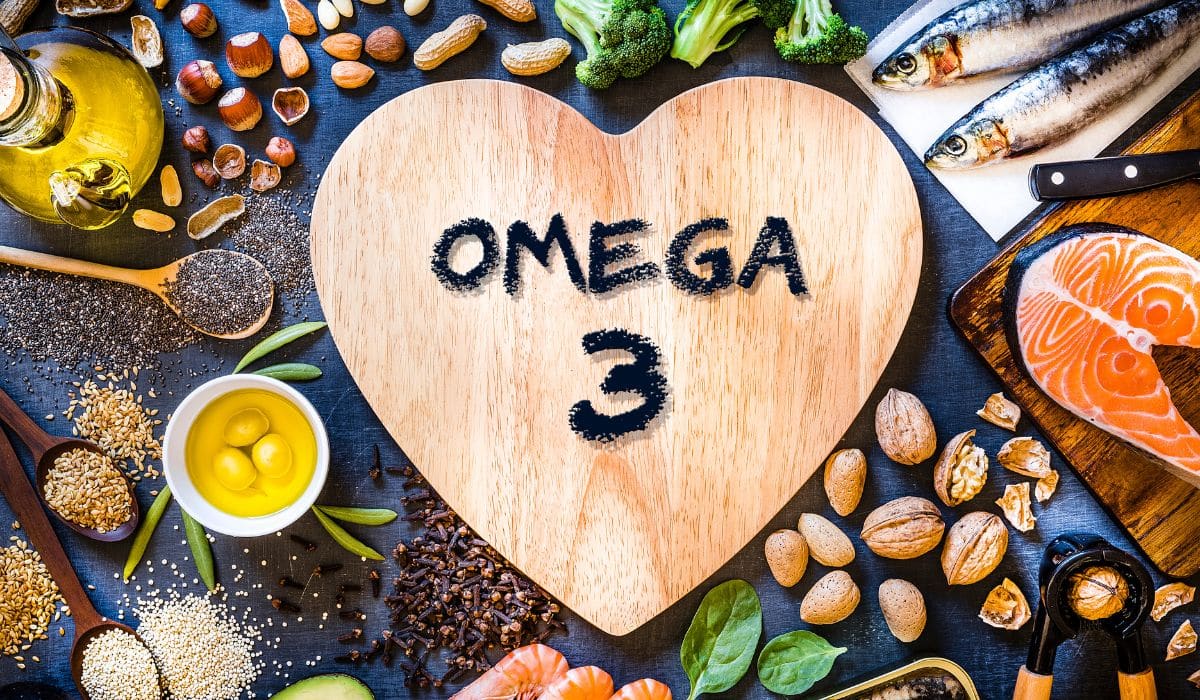Everyone agrees that Omega-3 fats are important for their anti-inflammatory benefits. But the Paleo argument has always been that fish and seafood are superior to plant sources like flax and walnuts. That was based on the best research we had at the time, but some newer reviews are questioning whether the methods used in those studies were really accurate.
That's part of studying nutrition – the research is always changing. So here's a look at the evidence in support of plant Omega-3s, and why they might actually be better than we thought.
What Are Omega-3 Fats?
Omega-3 fats are the anti-inflammatory fats found in fish and seafood. Various studies have connected Omega-3s to protection against chronic diseases like heart disease, diabetes, and depression. They're particularly interesting to the Paleo crowd because we eat a lot less of them now than we used to. So the lack of Omega-3 fats in the modern diet might be one among many reasons why chronic diseases are so common.
Omega-3 fats are essential fatty acids, meaning that your body can't make them itself. You can actually DIY some nutrients if you need to. Glucose is one good example: your liver can make it out of protein. But you can't make your own Omega-3s.
There are three important abbreviations you need to know related to Omega-3 fats:
- EPA (Eicosapentaenoic acid): one type of Omega-3 fat.
- DHA (Docosahexaenoic acid): another type of Omega-3 fat. DHA is particularly important for brain function.
- ALA (Alpha-Linoleic Acid): this is a precursor to the other two. If you eat ALA, your body can make it into EPA and DHA.

Fish and seafood contain EPA and DHA (as well as other types of Omega-3 fats). Flax, chia seeds, walnuts, and other plant sources contain ALA. So when you eat plant sources of Omega-3s, your body has to convert that ALA into EPA and DHA before you can get the benefits.
The problem here is that the conversion rate is really inefficient – or at least, that's what we've thought up till now. The precise percentages vary from one study to the next, but the typical numbers are:
- Less than 10% of the ALA you eat gets converted to EPA
- Less than 1% of the ALA gets converted to DHA.
The conversion is already low, and in men it's even less efficient. It's also less efficient in people who eat a lot of Omega-6 fats. This study found that ALA does not reliably raise levels of DHA, and that it doesn't even do much for EPA, especially in men.
But a new study from July of 2015 suggests that the conversion rates might not actually be that low – previous studies might have been getting the wrong idea from the way they measured it. According to the authors, measuring levels of DHA in the blood doesn't necessarily provide an accurate measurement of DHA in the brain (which is where you really need it), so studies that just measured blood DHA might be significantly underestimating the effect of ALA.
Also, sometimes ALA can get stored in fat tissue and turned into DHA later on, which the studies didn't always measure. So there might be longer-term benefits that we haven't been counting in the assessment.
Effects of ALA on Heart Health
So far, it seems like previous studies might have been underestimating the conversion of ALA into EPA and DHA. But conversion to EPA and DHA is really just a proxy measurement – the real question is whether ALA provides the real-world benefits of other Omega-3 fats for actual problems like heart disease and inflammation. And a few other new studies are suggesting that it might: here's a look.
This study makes a case for ALA for heart problems:
- In studies where the researchers just measured associations between different foods and the risk of cardiovascular disease (without using any experimental diets, just measuring what people were already eating), ALA seemed to be associated with heart health just as strongly as EPA + DHA.
- When researchers gave people different diets and measured the results, ALA seemed to be basically as good as EPA + DHA, but it's hard to compare the benefits, because the ALA groups typically changed their diet in other ways as well (so ALA wasn't the only difference). For example, if you have people start eating more walnuts, they're going to be getting more fiber and Vitamin E as well as more ALA, so if they have better health afterwards, how do you know it's the ALA?
A more recent review confirmed the evidence associating a high dietary ALA intake and a lower risk of heart problems. Association doesn't prove causation, and all the same caveats about confounding factors in ALA foods still apply. But it's interesting evidence pointing to a stronger benefit than we'd previously thought.
The authors explained that some of the previous work on ALA may have underestimated its power because they measured the concentration of ALA in the blood or in fat tissue, instead of dietary ALA. Since ALA starts getting broken down, used for energy, and converted into different things right away, the concentration in blood or fat tissue doesn't necessarily reflect how much you eat.
It's Not Just About Conversion
This article (also hot off the presses, from June of 2015) points out another interesting aspect of ALA. In the rush to see how well ALA gets converted to EPA and DHA, we might have missed the effects of ALA per se, no conversion required.

The authors were looking at the metabolic effects of Omega-3 fats: how well they improve insulin sensitivity and help people control their blood sugar. The researchers they found that ALA, EPA, and DHA all had benefits, but in different ways: ALA is has more directly anti-obesity effects, while DHA is more directly anti-inflammatory.
Both of those are good things! If we assume that EPA and DHA are the important Omega-3s and only focus on the conversion of ALA to those other forms, we might be missing the particular benefits of ALA.
Summing it Up
Some new studies suggest that plant sources of Omega-3 fats might actually be more powerful than previous research suggested. Because of the methods used in previous studies, they might have underestimated the conversion rates. And conversion isn't the only thing that matters: ALA has benefits in its own right regardless of how well it's converted to EPA and/or DHA.
Dietary ALA is associated with a lower risk of heart problems, although it's possible that this could just be confounding factors (e.g. other nutrients in foods that also contain ALA, or the fact that people who tend to eat ALA-rich foods like walnuts and flex tend to be health nuts and have a better diet anyway).
That's encouraging to people who can't eat fish for whatever reason (allergies, aversions, no high-quality sources available…). And for the rest of us, it doesn't have to be either/or. There's no law that you have to choose between tuna and flaxseeds, or between salmon and walnuts. ALA, EPA, and DHA all have benefits of their own: why not eat all of them?





Leave a Reply